
Princeton Battlefield State Park, NJ
Reimagining Princeton
Saving the Battlefield that Saved the Revolution
For decades, Princeton Battlefield State Park has been an easily overlooked historic treasure. Following the acquisition of the very land across which Washington charged, we have the opportunity to reimagine how visitors experience the park and its history.
On January 3, 1777, the fate of the American Revolution hung in the balance. Ten days earlier, Continental General George Washington had made the desperate gamble – the only outcomes of which were “victory or death” – and crossed the ice-choked Delaware River on Christmas to attack Hessian troops at Trenton. He triumphed that morning, only to enter into a high-stakes game of cat and mouse that led to a second crossing of the Delaware a few days later. Finally, in the fields outside of Princeton, he met a column of British Regulars in massed, pitched battle.
Help Washington's Legacy at Princeton come alive!
The fighting was fierce, and the American position threatened. Knowing that to fail then endangered all that had been gained in recent days, Washington spurred his heaving horse forward, personally leading a countercharge where the action was thickest. When the smoke cleared, Washington was still astride his white steed, the British line broken and in retreat. The cause of Independence lived on.
Thanks to Our Partners
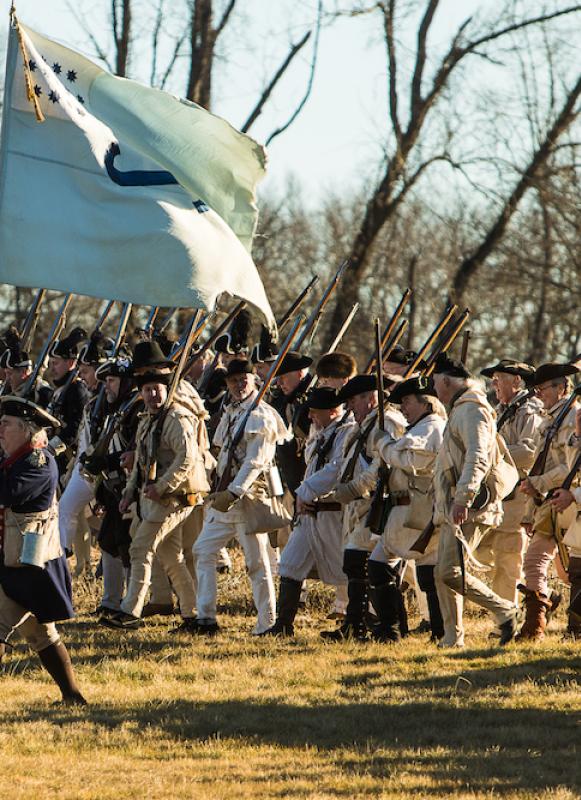


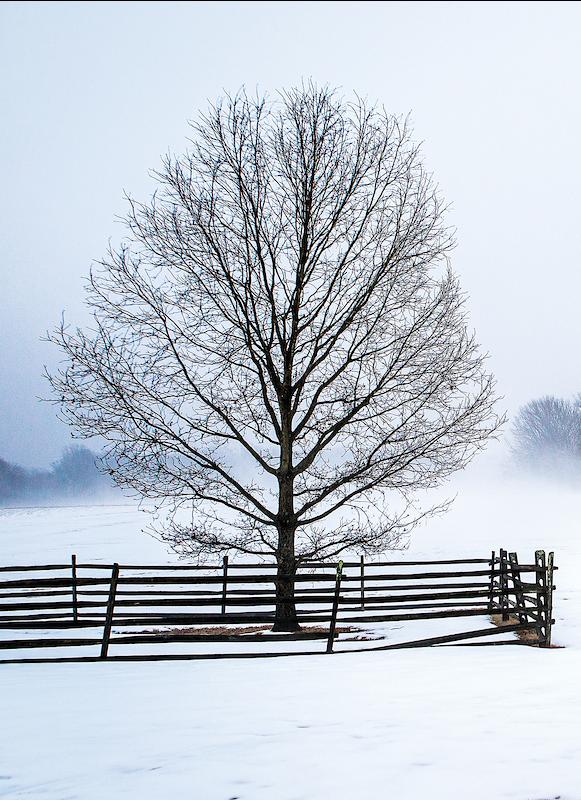
The Vision
For decades, Princeton Battlefield State Park has been an easily overlooked historic treasure, small but beautiful and boasting iconic features like the Mercer Oak (today, a sapling of that original tree) and the Thomas Clarke House. Following the American Battlefield Trust’s acquisition of Maxwell’s Field – the very land across which Washington charged – we have the wholly unique opportunity to reimagine how visitors experience the park and its history.
This work grew out of an innovative interpretation and restoration plan that provides visitors with a more immersive experience, transporting them back to a moment in time when American independence hung in the balance. The upgrades Princeton Battlefield State Park will help young and old alike to walk in the footsteps of America’s first citizen soldiers, and better understand the dramatic events of January 1777.
At the core of the plan is the creative use of traditional and digital interpretation, which puts visitors at the center of the day’s battle, whether it is manning the guns of Moulder’s Battery as they fired on the British lines, or amidst the confusing fighting between Redcoats and Continentals within William Clarke’s restored apple orchard. In addition, the reappearance of wartime roads and fence lines through careful rehabilitation efforts will enable visitors to see what the soldiers saw of that frigid morning. A convenient mobile app with augmented reality features will provide users with an interactive guided tour of the battlefield. Further, a new park entrance and parking lot will provide an opportunity to restore the core of the battlefield, where intense combat occurred.
The plan was developed in collaboration with interpretive specialists at History Associates, Inc., and landscape architects at Stach PLLC. It was made possible with a planning grant from the federal American Battlefield Protection Program, administered by the National Park Service, and refined thorough consultation with numerous partners and stakeholders, especially New Jersey State Historic Sites and Parks, the Princeton Battlefield Society and the New Jersey Society of the Sons of the American Revolution.
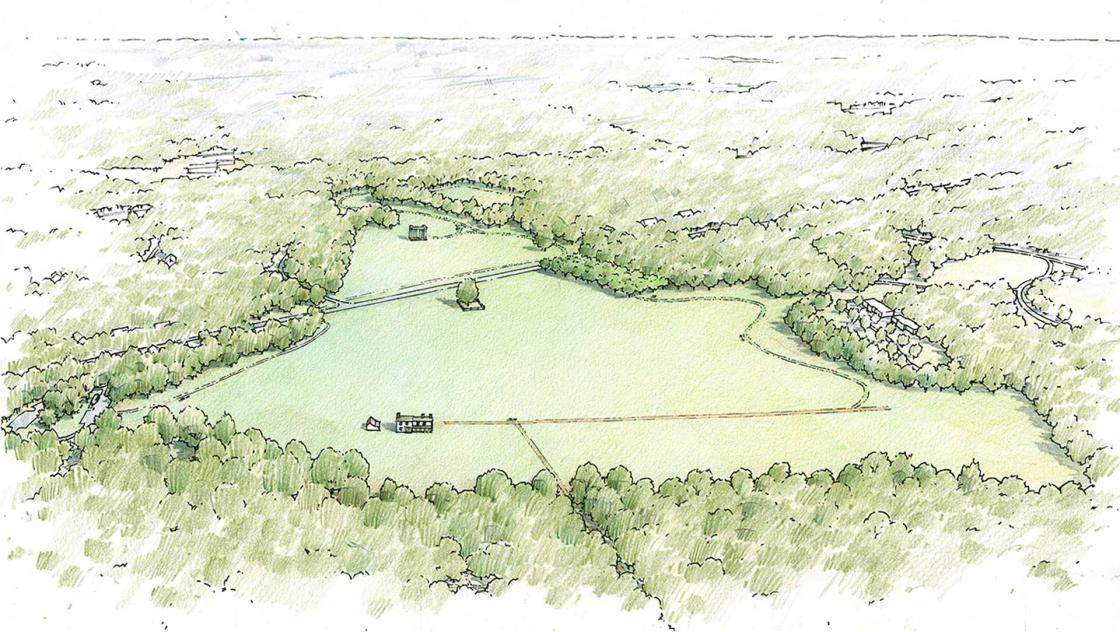
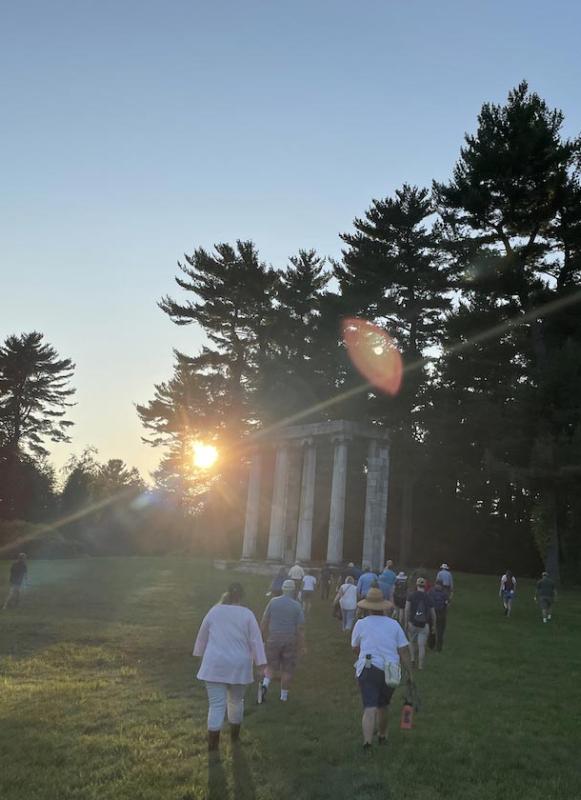

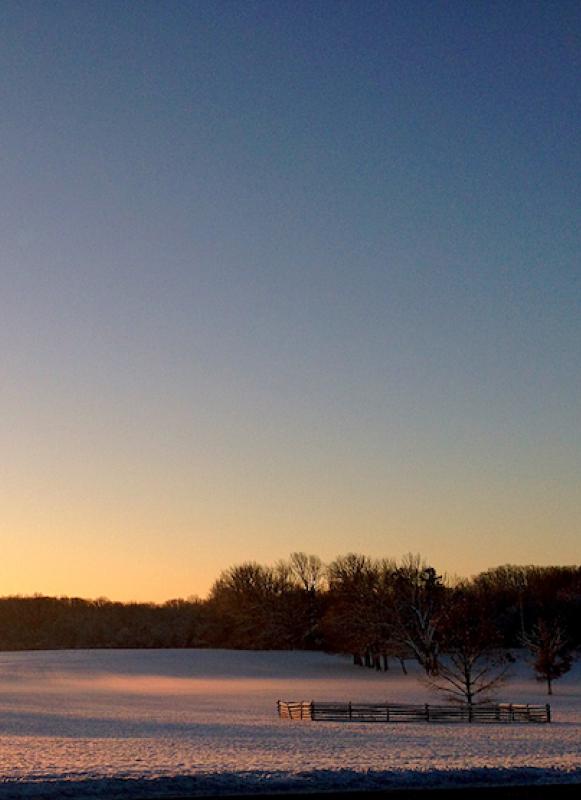

To Date
As many ambitious projects often do, our efforts at Princeton will unfold over the course of the next few years over multiple stages. The Trust’s staged approach will make Princeton Battlefield State Park a model for interpretation and management of highly significant heritage landscapes during the Semiquicentennial period.
To this point, the initiative has successfully seen:
The creation of 13 new interpretive markers that will illuminate the battlefield for visitors. The waysides were funded with assistance from Federal, state and nonprofit history partners, and will include a bronze patina battlefield map table, two “battle window” signs and 10 interpretive plaques.

New wayside marker installed November 2024 at the Princeton Battlefield. Will Krakower - Curious what a “battle window” is? These signs take extracted elements from wartime paintings and illustrations and apply them onto clear, acrylic windows that visitors can then peer through to grasp a sense of the battle action that unfolded on the landscape.
The development and launching of an interactive mobile app, The Liberty Trail NJ, will provide four tour options and an augmented reality (AR) experience to explore Princeton and sites associated with the American Revolution in New Jersey. This is only the first module in a wider app initiative with state partners Crossroads of the American Revolution and the New Jersey Historical Commission, which together make up RevolutionNJ.
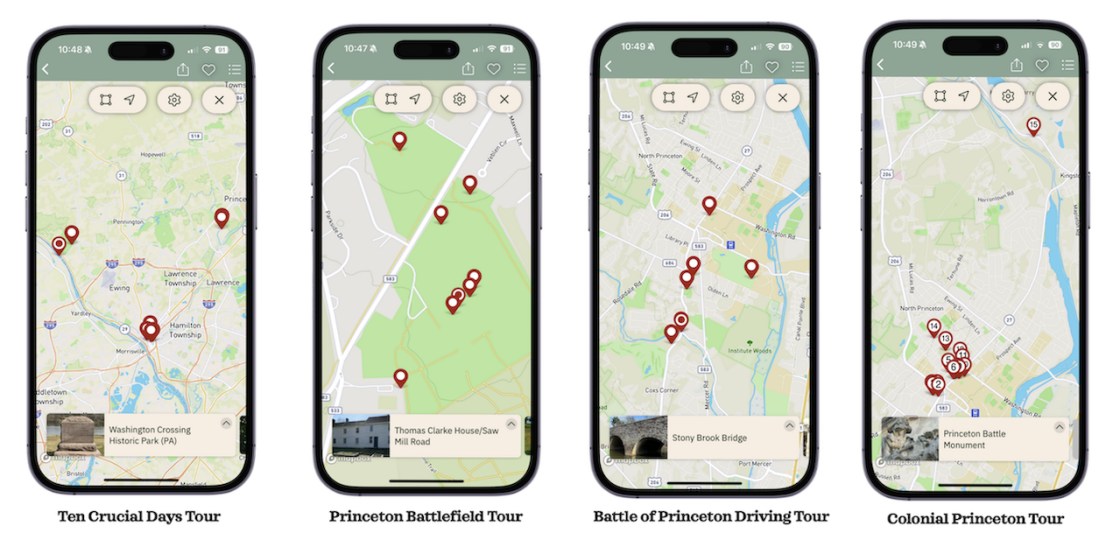
An archaeological investigation of battlefield areas that are targeted for restoration, to identify lost resources and protect historic artifacts. South River Heritage Consulting, led by Archaeologist Wade Catts, investigated these park lands throughout August and September 2024. The field team found Revolutionary War case shot and musket balls, underscoring the intensity of combat on the field. One of the most curious finds was a 1745 medallion associated with the Jacobite Rebellion.
Archaeologists Wade Catts (right) and Dana Linck (left) in the field checking "flagged" areas for further investigation. Dan Komoda The archaeological investigation also called upon a LiDAR (Light Detection and Ranging) scan (performed in August 2023) that thoroughly defined the topography of the battlefield landscape, confirming such things as the approximate locations of wartime trace roads. Such modern techniques allow for maximum understanding of historic landscapes with minimal ground disturbance, ensuring the retention of important features that could be damaged by excavation.
- The removal of invasive growth near the site of Washington’s charge (Maxwell’s Field), a necessary first step in a process that will ultimately enable us to incorporate this property into the state park, as well as restore the 1777 viewshed. This process includes a tree survey before removal and replanting of existing, non-historic trees.


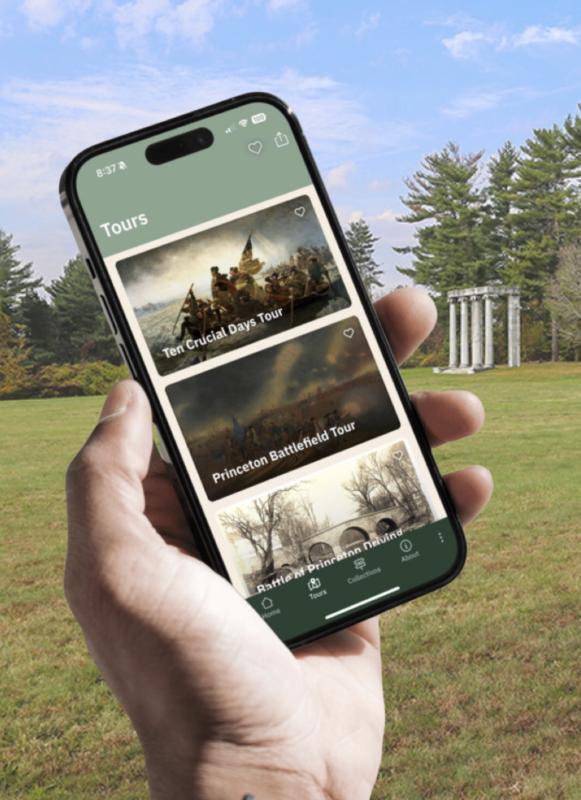
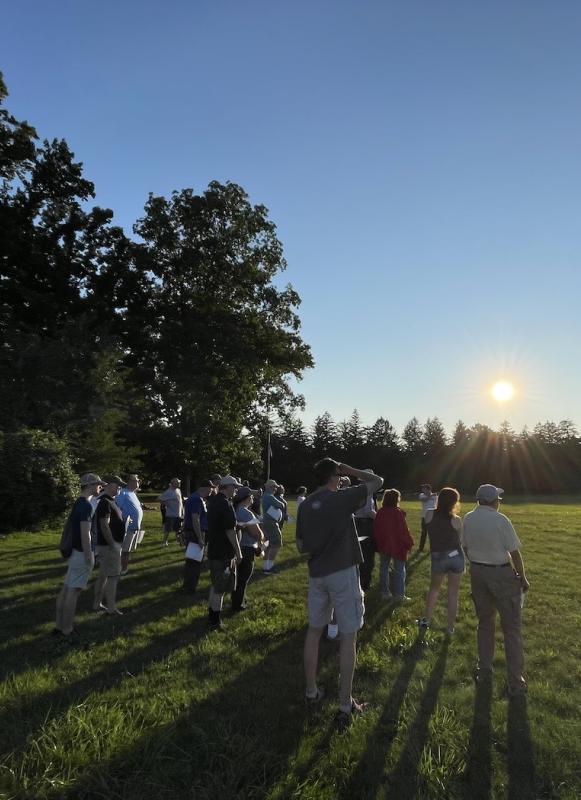
On the Horizon
On June 28, 2024, Governor Phil Murphy signed into law the FY2025 New Jersey state budget that includes $1.3 million for improvements to the Princeton Battlefield. Through the leadership of Senator Andrew Zwicker, Assemblywoman Mitchelle Drulis and Assemblyman Roy Freiman, the request for funding was introduced and pushed across the finish line. This funding will be matched with private dollars raised by the American Battlefield Trust, the Princeton Battlefield Society, and other stakeholders.
The $1.3 million will contribute to the relocation of parking outside the historic core of the battlefield, where the most intense fighting took place. The concept incorporates a new park entrance, a visitor orientation circle, and 65 parking spaces with school bus access.
In addition, excitement about the interpretation and restoration plan has generated local interest in a new visitor facility on the battlefield. As a result, a portion of the funding will underwrite an investigation into a possible future visitor and education center on the battlefield.
Additional thanks to the Princeton Battlefield Society, Princeton Sons of the American Revolution, Princeton Daughters of the American Revolution, Sons of the Revolution in New Jersey, New Jersey Sons of the American Revolution, Society of the Cincinnati in the State of New Jersey, Order of the Founders & Patriots of America, and Morven Museum and Garden, who all expressed their support for the state funding.
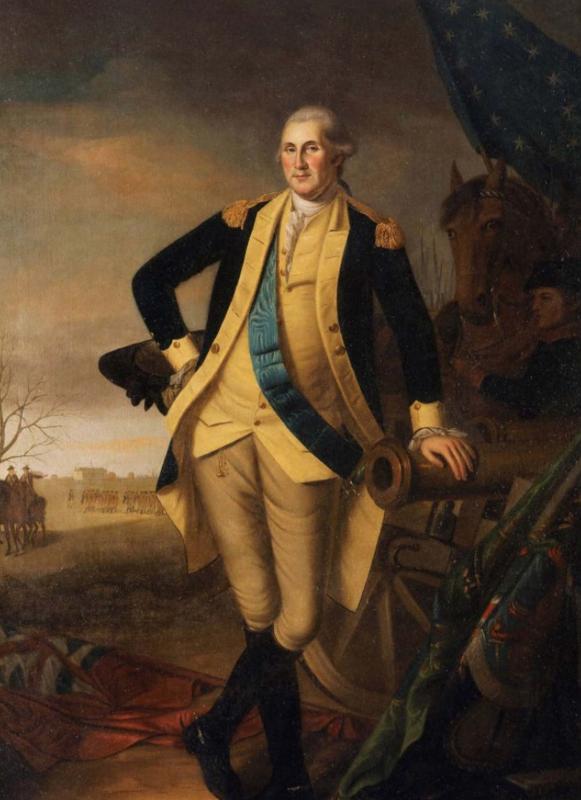

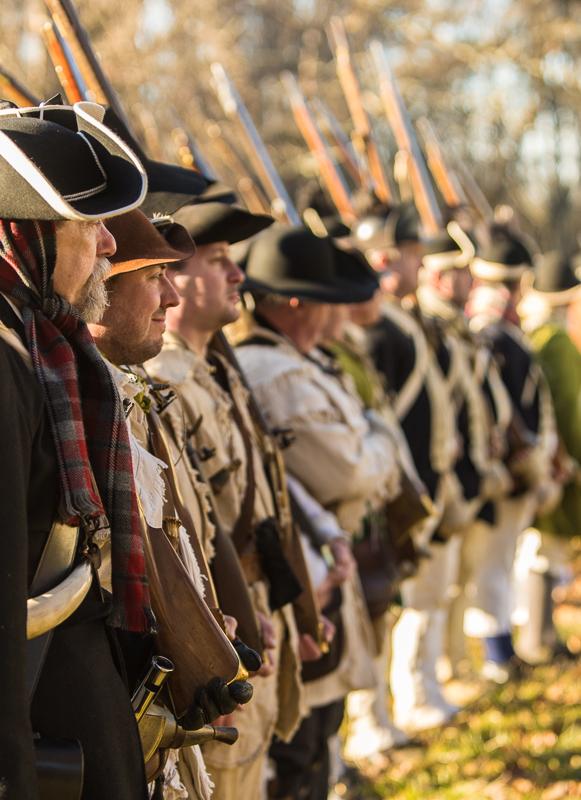
Future Work
Restoring a 250-year-old battlefield to its wartime appearance is no small task, but invaluable to help visitors better understand how this decisive moment in American history unfolded. To achieve this, the American Battlefield Trust, New Jersey State Historic Sites and Parks and the Princeton Battlefield Society are proceeding with several impactful enhancements, including the installation of a walking path, replanting of an orchard near where the William Clarke House once stood, the restoration of historic tree and fence lines and the removal of 20th-century intrusions. In 2025, we will seek to recapture the wartime Sawmill Trace — the road used by General Washington and his men to reach the battlefield.
Help us recapture the roads that led to Patriot victory at Princeton!

Visitors will get to walk the same pathways that Washington and his men took 250 years ago. They'll get to survey the grounds and see in their mind’s eye what it would have been like to witness hundreds of British troops on the hill opposite them. They'll march over the same ground, stand on battle lines, charge through the recreated apple orchard — it's going to be an amazing experience.
Will Krakower, Resource Interpretive Specialist at Princeton Battlefield State Park




Preservation Milestone
This large-scale reimagining of the visitor experience at Princeton is made possible by the American Battlefield Trust’s 2016 acquisition of 15 acres at Maxwell’s Field, following a lengthy advocacy campaign by a coalition of concerned organizations. The land, essential to understanding the full scope of the battle, is directly adjacent to the state park’s current holdings and is expected to soon be incorporated into the state park.
The Park’s beginning goes back to 1946, when Princeton landowners gifted roughly 40 acres to the State of New Jersey for the creation of a battlefield park. Over time, the site has grown to include approximately 80 acres, not including the adjacent Institute Woods — owned by and named for the neighboring Institute for Advanced Study (IAS).
IAS peacefully coexisted with the park for many years, even brokering a land deal to expand the state park in 1973. But a 2003 proposal to build new faculty housing on the Maxwell’s Charge site – of which, its historic significance was then confirmed by academics and archaeologists – raised significant concerns. It was a long road, which saw the battlefield placed on the National Trust for Historic Preservation’s “America’s 11 Most Endangered Historic Places” list in 2012.
Ultimately the American Battlefield Trust was able to broker a deal that allowed IAS to build a refined project on the least historically sensitive area and sell the remaining two-thirds of the land, nearly 15 acres, to the Trust for $4 million.